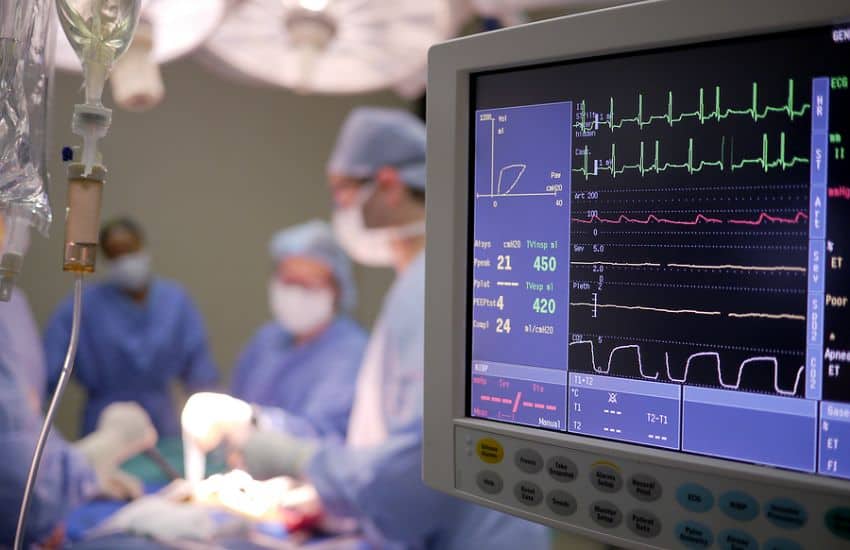
- Selecting The Right EKG Machine
- Proper Setup Of An EKG Machine
- Calibration Of The EKG Machine
- Optimizing EKG Electrode Placement
- Ensuring High EKG Signal Quality
- Troubleshooting Common EKG Issues
- Interpretation & Verification Of EKG Results
1. Selecting The Right EKG Machine
Choosing the right EKG machine is the first critical step in ensuring accurate readings. Various models range from simple 3-lead machines to advanced 12-lead systems. Evaluate the specific needs of your practice to select an EKG machine that offers the right balance of features and reliability. Budget can be a limiting consideration but buying a refurbished EKG machine from a reputable company can ensure your practice gets the highest quality equipment.Types Of EKG Machines For Sale
- Portable EKG Machines: Suitable For Clinics & EMS Techs
- Standard 3-Lead EKG Machines: Ideal For Routine Check-Ups
- Advanced 12-Lead EKG Machines: Essential For Detailed Cardiac Assessments
2. Proper Setup Of An EKG Machine
Once you select the appropriate machine, make sure it’s set up correctly. Incorrect setup can compromise the accuracy of the readings. Follow the manufacturer’s guidelines meticulously during setup to avoid common pitfalls.EKG Equipment Setup Instructions
- Position The Machine On A Stable Surface To Avoid Movement During Tests
- Check All Electrical Connections To Ensure They Are Secure & Free From Defects
- Ensure The Machine Is Calibrated Regularly To Maintain Optimum Performance
3. Calibration Of The EKG Machine
Calibration is an ongoing process that ensures your machine remains accurate over time. Regular calibration can significantly enhance the accuracy of EKG readings, reducing the risk of diagnostic errors.How to Perform EKG Calibration
- Use A Calibration Tool Or Software Provided By The Manufacturer
- Adjust The Machine Settings According To The Calibration Results
- Schedule Periodic Calibration Checks As Recommended By The Equipment Supplier
4. Optimizing EKG Electrode Placement
Electrode placement is crucial for capturing accurate EKG signals. Improper placement can lead to misinterpretations. Consistent and accurate electrode placement ensures high-quality EKG signals and reliable results.Best Practices for EKG Electrode Placement
- Clean The Skin Thoroughly Before Placing Electrodes To Remove Oils & Debris
- Use High-Quality Electrode Pads To Ensure Good Skin Contact
- Place Electrodes According To The Standard Lead Configurations
5. Ensuring High EKG Signal Quality
Maintaining the quality of EKG signals is essential for accurate interpretation. High-quality signals are vital for precise EKG interpretations, supporting better clinical decisions.Tips For Maintaining EKG Signal Quality
- Ensure All Cables Are In Good Condition & Free From Interference
- Use Shielded Cables If The Environment Is Prone To Electrical Noise
- Regularly Inspect & Replace Worn-Out Electrodes & Cables
6. Troubleshooting Common EKG Issues
Even with the medical equipment, occasional issues may arise. Quick resolution of issues minimizes downtime and maintains the accuracy of EKG diagnostic processes. Being prepared with troubleshooting knowledge can save time and ensure ongoing accuracy.EKG Troubleshooting Tips
- If The Machine Displays Erratic Readings, Check Electrode Placement & Skin Contact
- Ensure There Is No Electrical Interference From Nearby Devices
- Restart The EKG Machine If It Becomes Unresponsive Or Displays Errors
7. Interpretation & Verification Of EKG Results
The final step involves interpreting the results accurately and verifying the reliability of the resulting EKG strips. Accurate interpretation and verification of EKG results ensure the reliability of the diagnostic outcome, contributing to effective patient care.Steps For Accurate EKG Interpretation
- Compare The EKG Strips With Patient History & Symptoms
- Use Software Tools & Manuals To Help In Pattern Recognition
- Consult with Colleagues Or Specialists If Results Are Ambiguous
Additional Factors To Consider For Ensuring EKG Accuracy
Ensuring accurate EKG readings involves not only the steps mentioned above but also a commitment to best practices in handling and maintaining medical equipment.Factors For Reliable EKG Results
- Routine Maintenance: Regular Checks and Servicing of The EKG Machine Ensure Its Longevity & Accuracy
- Staff Training: Consistent Training For Staff On EKG Machine Usage & Troubleshooting Techniques Is Crucial
- Updating Software: Keeping The EKG Machine Software Up-To-Date With The Latest Versions Fixes Bugs & Improves Functionality
- Quality Assurance Programs: Implementing Internal Quality Assurance Programs Aids in Maintaining High Standards
FAQs About EKG Accuracy
To further assist, here are answers to some frequently asked questions about ensuring accurate EKG machine readings.Calibration is essential to maintain the accuracy and reliability of an EKG machine. It adjusts the device to provide precise measurements.
The frequency of calibration depends on the manufacturer’s guidelines and the frequency of use, but experts recommend performing calibration checks monthly. If you find consistent inaccurate results and the machine needs calibration more frequently, it might be a sign you need to replace the EKG machine.
Yes, incorrect placement can lead to inaccurate readings. It’s important to follow standard lead placement protocols strictly.
Ensure good skin contact with electrodes, use high-quality cables, and reduce any sources of electrical interference.
Take Your EKG Accuracy To The Next Level With Like-New Equipment
By selecting the right equipment, ensuring proper setup and calibration, focusing on electrode placement, and adhering to best practices, you will be well-positioned to deliver the most accurate and reliable cardiac diagnostics possible. For high-quality EKG machines and expert advice on optimizing your medical equipment usage, contact Gumbo Medical. We are committed to providing exceptional healthcare solutions nationwide, ensuring the reliability and accuracy of your EKG diagnostic tools.
